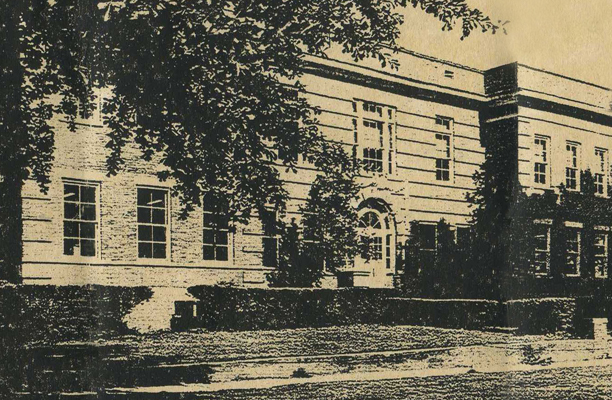

Alabama State Teachers College |
||||||
|
||||||
The Laboratory High School, founded in 1920, was located on the campus of the Alabama State Teachers College in Tullibody Hall, along with the college’s John W. Beverly Science Hall, music conservatory, and gymnasium. During the Secondary School Study, 300 students in grades K–12 were enrolled, with over 150 students attending the secondary school, grades 8–12. Since “Lab High” was receiving public funds as well as support from Alabama State College, admission to the school was open, i.e., nonselective. This led to a more diverse student population of abilities and interests (Dunn, 1946). The high school faculty included eight full-time teachers and nine part-time teachers from the college. Lab High, whose slogan during this time was, “Study the growth and beauty of nature—plants and animals for individual development,” served primarily as a site for the observation of classes by preservice teachers, with occasions for practice teaching (Hardy, 1943). Most student teaching placements were located off campus.
In 1969, Lab High closed as part of a reorganization of Alabama State College to university status. The Laboratory High School building of the 1940s, Tullibody Hall, no longer stands. The Laboratory School is located on the campus of the Alabama State Teachers College. Its enrollment for grades 1-12 is 300, with slightly more than half of this number enrolled in grades 8-12. The faculty of the High School department of the Laboratory School composed of eight full-time teachers and nine part time teachers from the college staff are attempting to develop a demonstration school whose instruction program will be suggestive to college students pursuing the teacher education curriculum. Student-teaching is done largely off campus and the campus school is reserved for observation and limited practice. The curriculum is being gradually organized along the lines of the core approach recommended for Alabama schools by the State Department of Education. The school is accredited by the regional agency. |
||||||
GOALS FOR 1941-42 SETUP The Laboratory High School at State Teachers College, Montgomery, Alabama in setting up its goals for the year indicated how the various areas in the school planned to contribute to the achievement of the cooperative purposes which follow. An excerpt from the plan will illustrate the general nature of the contributions to be made by the various areas in achieving the goals mentions above. Contribution will be made by the social science area through: Contribution will be made through the social science area through: Contribution will be made by the language arts area through: The following procedures and student activities will be used to determine the extent to which the cooperative purposes previously listed have been achieved: from To and From Our Schools: A News Bulletin of the Secondary School Study of the Association of Colleges and Secondary Schools for Negros. Atlanta University, Atlanta, Georgia Vol. 1 January, 1942 No. 2 |
||||||




